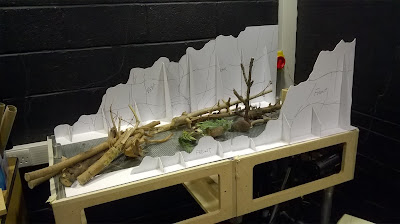Plants and trees of Mars! Part 2

When I began to bring down all the boxes of fake plants, model railway litchen and potpourri I saved over the past 10 years, I realized I needed help making the plants. I knew that due to size of my set I wasn't going to need many plants but I didn't want to repeat what I had made years before. I enlisted the help of my friend Amy Callaghan who had some experiences with prop making but was a excellent listener and followed instructions. She took what I explained about how I envisioned a prehistoric Mars to be like and what I imagined the plants to be like, the following photos are what she came up with in one day!



